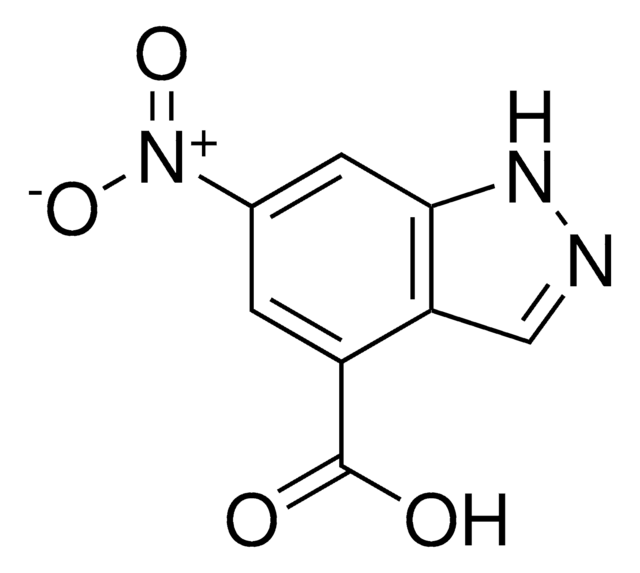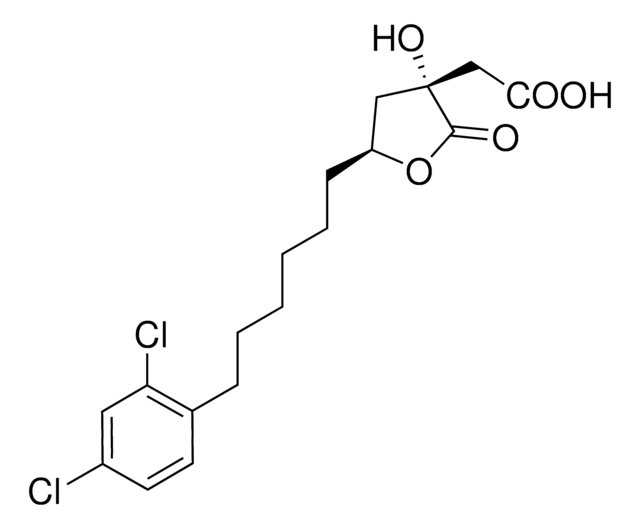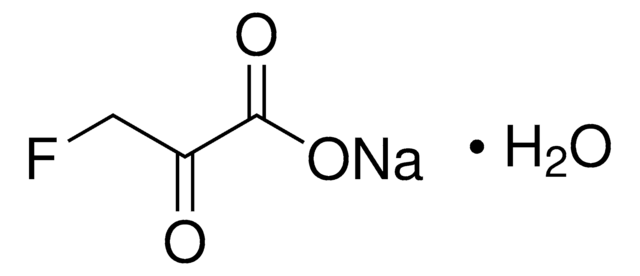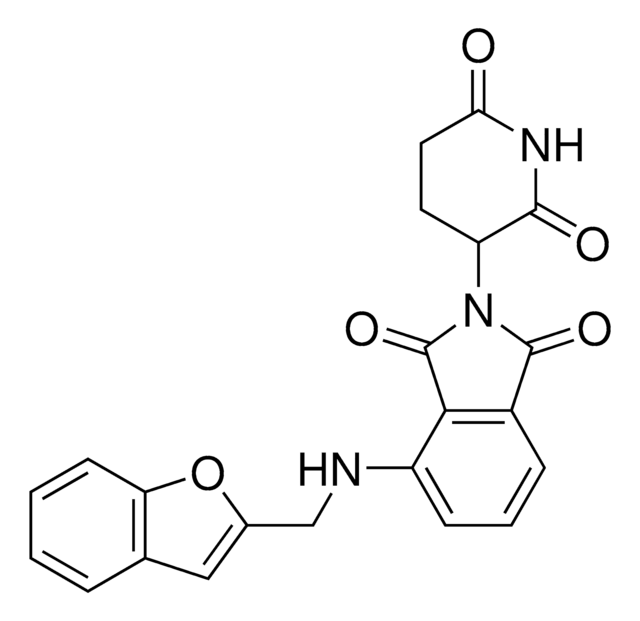SML3650
CTPI-2
≥98% (HPLC)
Synonym(s):
2-(4-Chloro-3-nitrobenzenesulfonamido)benzoic acid, 2-[[(4-Chloro-3-nitrophenyl)sulfonyl]amino]benzoic acid, CTPI 2, CTPI2
Sign Into View Organizational & Contract Pricing
All Photos(1)
About This Item
Empirical Formula (Hill Notation):
C13H9ClN2O6S
CAS Number:
Molecular Weight:
356.74
MDL number:
UNSPSC Code:
12352200
NACRES:
NA.25
Recommended Products
Quality Level
assay
≥98% (HPLC)
form
powder
color
white to beige
solubility
DMSO: 2 mg/mL, clear
storage temp.
2-8°C
Biochem/physiol Actions
CTPI-2 is a selective mitochondrial citrate transporter (SLC25A1) inhibitor that displays H1299 anti-proliferation activity in a SLC25A1-dependent manner (IC50 <10 μM). When compared with CTPI-1, CTPI-2 exhibits 20-fold higher target affinity (hSLC25A1 KD = 3.5 μM vs. 63.6 μM, respectively) and is ~1000-fold more potent against H1299 sphere-forming capacity. CTPI-2 inhibits mitochondrial respiration and formation of patient NSCLC tumors-derived CSCs spheres in cultures (10-50 μM), as well as suppresses the growth of patent-derived NSCLC exnografts in mice in vivo (28 mg/kg q.o.d. i.p.).
Storage Class
11 - Combustible Solids
wgk_germany
WGK 3
flash_point_f
Not applicable
flash_point_c
Not applicable
Certificates of Analysis (COA)
Search for Certificates of Analysis (COA) by entering the products Lot/Batch Number. Lot and Batch Numbers can be found on a product’s label following the words ‘Lot’ or ‘Batch’.
Already Own This Product?
Find documentation for the products that you have recently purchased in the Document Library.
Terumasa Umemoto et al.
The EMBO journal, 41(8), e109463-e109463 (2022-03-02)
In order to support bone marrow regeneration after myeloablation, hematopoietic stem cells (HSCs) actively divide to provide both stem and progenitor cells. However, the mechanisms regulating HSC function and cell fate choice during hematopoietic recovery remain unclear. We herein provide
Harvey R Fernandez et al.
Cell death and differentiation, 25(7), 1239-1258 (2018-04-14)
Therapy resistance represents a clinical challenge for advanced non-small cell lung cancer (NSCLC), which still remains an incurable disease. There is growing evidence that cancer-initiating or cancer stem cells (CSCs) provide a reservoir of slow-growing dormant populations of cells with
Kexu Xiang et al.
Cell death & disease, 13(7), 641-641 (2022-07-23)
Oncogenic mutations in metabolic genes and associated oncometabolite accumulation support cancer progression but can also restrict cellular functions needed to cope with DNA damage. For example, gain-of-function mutations in isocitrate dehydrogenase (IDH) and the resulting accumulation of the oncometabolite D-2-hydroxyglutarate
Our team of scientists has experience in all areas of research including Life Science, Material Science, Chemical Synthesis, Chromatography, Analytical and many others.
Contact Technical Service







